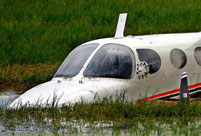Tibet's work in the field of ecological improvement and environmental protection is progressing steadily and in a law-governed manner. A relatively comprehensive legal system ensuring environmental protection has taken shape. The people' s congress and people' s government of the Tibet Autonomous Region have promulgated relevant local laws, regulations and administrative decrees, including the Regulations for Environmental Protection in the Tibet Autonomous Region, Rules for the Implementation in the Tibet Autonomous Region of the Grassland Law of the People' s Republic of China, Measures for the Implementation in the Tibet Autonomous Region of the Law of the People' s Republic of China on the Protection of Wildlife, and Opinions of the People' s Government of the Tibet Autonomous Region on the Implementation of the Decision of the State Council on Implementing the Scientific Outlook on Development and Strengthening Environmental Protection.
Remarkable progress in ecological improvement
Tibet has effectively protected its biodiversity and significant eco-function zones. A total of 47 nature reserves at various levels have been established in Tibet, including nine national-level ones, 14 at the autonomous region level and 24 at the prefecture or county level. Nature reserves cover a total area of 413,700 sq km, accounting for 33.9 percent of the total land area of the region and leading all the other areas of China. All the region's 125 types of wild animals and 39 wild plants under state key protection are well preserved in the established nature reserves. For instance, red deer, generally considered by the international animal research community to have been extinct, was discovered again in Tibet in the 1990s, and their numbers are increasing. The number of Tibetan antelopes is growing year by year to reach 150,000 so far. There are about 7,000 black-necked cranes in the region. Tibet is home to 22 ecological conservation areas (one at national level), eight national forest parks, three national wetland parks, four geological parks (two at national level), and three national scenic areas. In the preface written by Jimmy Carter, former president of the United States, to the book Across the Tibetan Plateau: Ecosystems, Wildlife, and Conservation, he appraised the biological diversity protection work of Tibet, saying it was not easy to increase the population of an endangered species but the industrious Tibetan people did it.
Forest and grassland ecological protection in the autonomous region has been crowned with signal success. Tibet strictly controls the scale of tree-felling. A project for the protection of natural forest resources, with a total area of 31,000 sq km, has been implemented in the three counties of Jomda, Gonjo and Markam, putting an end to the felling of natural forest resources for commercial purposes in these areas. In addition, Tibet has carried out a project for the planting of non-commercial forests in key areas, and set up demonstration zones of desertification control in Chushur and Chanang counties, Shigatse Prefecture and Shiquanhe Town. In 28 counties along the upper reaches of the Jinsha, Lancang and Nujiang rivers and the drainage area of the Yarlung Zangbo River, where the hazards of sandstorms and soil erosion are serious, a project to reforest cultivated land is being undertaken, in the course of which the afforested area has topped 83,700 ha, 338,700 ha of mountainous areas have been sealed off to facilitate afforestation, and every year an additional 19,200 ha of cultivated land is restored to forests. The forest coverage rate has now risen to 11.91 percent. Tibet rationally utilizes and protects grassland to ensure the sound development of the grassland ecology. Emphasis has been placed on fencing and building water-conservancy projects on natural grassland, and a pasture-responsibility system has been implemented. In line with the principle of limiting the number of grazing animals by the size of the pasture, rotation grazing periods and no-grazing areas have been designated. Energetic efforts have been made to promote man-made grassland, improve deteriorated pastureland and prohibit the grazing of animals in some areas so that the grassland can be restored. By the end of 2012 there was 85.11 million ha of natural grassland in total, of which 69.1 million ha was available for grazing. Tibet has initiated a compensation scheme for non-commercial forests and a rewarding mechanism for the protection of grassland.
Tibet has also intensified its efforts in the areas of water and soil conservation, and prevention of geological disasters. It has launched the construction of a water- and soil-conservation monitoring network. In recent years, projects have been carried out to prevent disasters caused by landslides in Zham Town, Nyalam County, landslides and mud-rock flows in the county seat of Chongye, landslides threatening the Grade II power station of the Bayi Power Plant in Nyingchi Prefecture, and mud-rock flows into the Liusha River in Lhasa.
【11】 【12】 【13】 【14】 【15】 【16】 【17】 【18】 【19】 【20】
【21】 【22】 【23】


 No news of survivors in Lao Airlines crash
No news of survivors in Lao Airlines crash Five fighters in flight training
Five fighters in flight training London mayor hails free trade, subway system on China tour
London mayor hails free trade, subway system on China tour Different eye catching shows at housing fairs in China
Different eye catching shows at housing fairs in China Chalk it up to great courage
Chalk it up to great courage Tibetan girl helps mobilize volunteers onlin
Tibetan girl helps mobilize volunteers onlin Lingerie show dazzles Wuhan Motor Show 2013
Lingerie show dazzles Wuhan Motor Show 2013  Chinese screen goddesses from Beijing Film Academy
Chinese screen goddesses from Beijing Film Academy  Weekly Sports Photos
Weekly Sports Photos Bayi Parachute Team of PLA Air Force
Bayi Parachute Team of PLA Air Force World has never been dark-- a blind kid’s life in Tibet
World has never been dark-- a blind kid’s life in Tibet Change to law may make it easier to sue polluters
Change to law may make it easier to sue polluters UNESCO world heritage site: Montale Tower
UNESCO world heritage site: Montale Tower U.S. Senate leader announces bipartisan deal
U.S. Senate leader announces bipartisan deal Fiber-optic wedding dress show shinning in Suzhou
Fiber-optic wedding dress show shinning in Suzhou Day|Week|Month